
The Estonian War of Independence, also known as the Estonian Liberation War, was a defensive campaign of the Estonian Army and its allies, most notably the United Kingdom, against the Bolshevik westward offensive of 1918–1919 and the 1919 aggression of the Baltische Landeswehr. The campaign was the struggle of the newly established democratic nation of Estonia for independence in the aftermath of World War I. It resulted in a victory for Estonia and was concluded in the 1920 Treaty of Tartu.

Konstantin Päts was an Estonian statesman and the country's president in 1938–1940. Päts was one of the most influential politicians of the independent democratic Republic of Estonia, and during the two decades prior to World War II he also served five times as the country's prime minister. After the 16–17 June 1940 Soviet invasion and occupation of Estonia, President Päts remained formally in office for over a month, until he was forced to resign, imprisoned by the new Stalinist regime, and deported to the USSR, where he died in 1956.
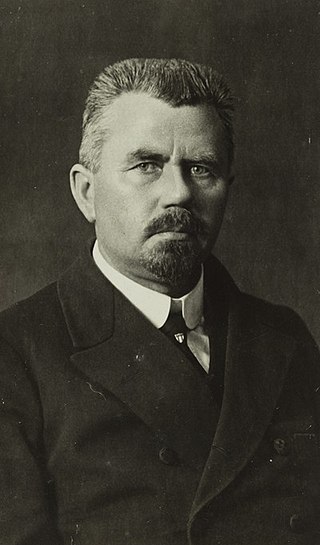
Johan Pitka, VR I/1, was an Estonian entrepreneur, sea captain and a rear admiral (1919). He was the Commander of the Estonian Navy in the Estonian War of Independence.

Julius Kuperjanov VR I/2, VR II/2 and VR II/3 was an Estonian military officer who was well-known in Estonia for being one of the Liberators of Tartu during the War of Independence and commander of the Tartumaa Partisan Battalion.

Ernst-Johannes Põdder VR I/1 was a famous Estonian military commander in the Estonian War of Independence.

Viktor Puskar VR I/1 was an Estonian military commander (Colonel) during the Estonian War of Independence.

Jaan Soots was an Estonian military commander during the Estonian War of Independence and politician.
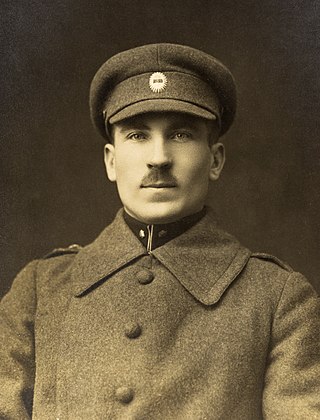
Karl Parts VR I/1, VR II/2, VR II/3 was an Estonian military commander during the Estonian War of Independence.

Jaan Teemant was an Estonian lawyer and politician.
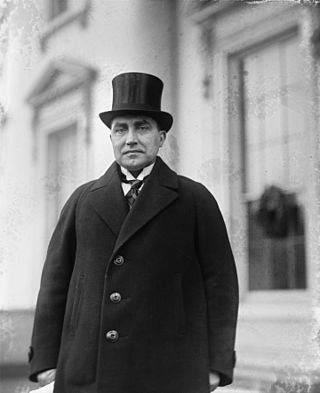
Ants Piip VR III/1 was an Estonian lawyer, diplomat and politician. Piip was the 1st Head of State of Estonia and the 5th Prime Minister of Estonia. Piip played a key role in internationalising the independence aspirations of Estonia during the Paris Peace Conference following World War I.

Jüri Jaakson VR III/1 was an Estonian businessman and politician.
The Battle of Cēsis, fought near Cēsis in June 1919, was a decisive battle in the Estonian War of Independence and the Latvian War of Independence. After heavy fighting an Estonian force moving from the north, supplemented by Latvian units, repelled Baltic German attacks and went on full counter-attack.

The Kuperjanov Infantry Battalion is a battalion of the Estonian Land Forces. It is a part of the 2nd Infantry Brigade. Battalion headquarters is at Taara Army Base, Võru.

Estonian partisans, also called the Forest Brothers were partisans who engaged in guerrilla warfare against Soviet forces in Estonia from 1940 to 1941 and 1944 to 1978.
The 1st Division was one of the three Estonian divisions created during the Estonian War of Independence, which was active until the Soviet occupation of Estonia. Since the restoration of independence in 1991 there are no divisions currently among the Estonian Defence Forces.
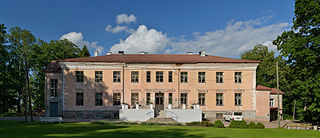
Paju is a village in Valga Parish, Valga County in southern Estonia. It's located about 6 km northeast of the town of Valga. Paju has a population of 80 and an area of 9.341 km².

The Battle of Tartu was fought between the 13th and 14th of January, 1919 in the Estonian War of Independence between the units of the Estonian 2nd Division and the forces of the Red Latvian Riflemen. The battle was a significant battle in the Estonian War of Independence. As a result of which, Estonian troops were able to liberate the rest of Southern Estonia from the Red Russian forces.
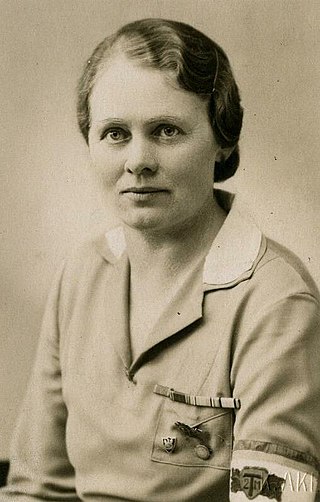
Alice Kuperjanov was an Estonian freedom fighter and nationalist, and the wife of Estonian military leader Julius Kuperjanov. She was a well-known figure in the 1918–1920 Estonian War of Independence, and in women's movements after that. After the 1940 Soviet invasion and occupation of Estonia during World War II, she was imprisoned, deported and executed by the Soviet authorities.
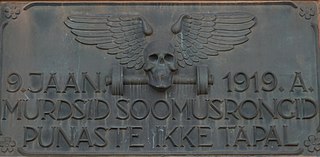
The Battle of Tapa, also known as the Capture of Tapa, took place on 9 January 1919 in Tapa, Estonia, between troops of the Russian Red Army and Estonia. The goal of the Estonian troops was to capture and liberate the Tapa Railway Station from occupation by Russia. Three armored trains (soomusrong) were used in the engagement, led by Captain Anton Irv, Captain Oskar Luiga, and Captain Jaan Lepp.

Voldemar Karl Koht VR II/3 was an Estonian soldier and commander of the Estonian Armored Train Regiment.



















